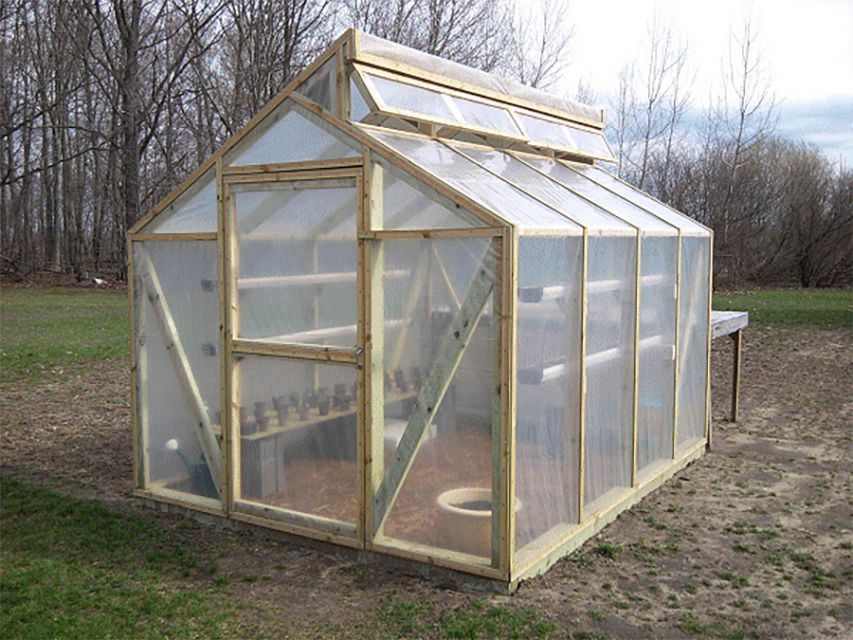DIY Flange Modification: How to Reduce Flange Size at Home
Understand flanges and why you might need to resize them
Flanges are project rims or edges use to strengthen objects, provide attachment points, or create sealing surfaces in pipe systems. Whether you’re work on a plumbing project, automotive repair, or custom fabrication, you might occasionally need to reduce a flange’s size to fit your specific application.
Before attempt any modification, it’s crucial to understand that flanges are oft design with precise dimensions for safety and functionality reasons. Modify them falsely can lead to leaks, structural failures, or other hazards. This guide focus on non-critical applications where minor modifications are acceptable.

Source: eliteflange.com
Safety considerations before start
Work with metal and tools require proper safety precautions:
- Invariably wear appropriate eye protection
- Use cut resistant gloves when handle metal
- Ensure proper ventilation when grind or filing
- Secure workpieces securely before cut or grind
- Keep a fire asphyxia tor nearby when use heat or creating spark
Remember that DIY flange modification is not appropriate for high pressure systems, gas lines, or safety critical applications. When in doubt, consult with a professional.
Tools you will need for diyDIYange reduction
Depend on your specific flange type and material, you may need some or all of these tools:
- Metal file (flat and round )
- Angle grinder with cut and grind discs
- Drexel tool with metal cutting attachments
- Hacksaw or jeweler’s saw
- Metal sandpaper (various grits )
- Measure tools (calipers, ruler, measure tape )
- Marker or scribe for mark cut lines
- Bench vise or clamps
- Debarred tool
Method 1: file down a flange
For minor size reductions or when work with softer metals, filing is frequently the safest and about control approach.
Step-by-step process:
- Measure and mark: Cautiously measure the current flange size and mark the new desire dimensions. For circular flanges, draw a complete circle to guide your work.
- Secure the flange: Place the flange in a vise or clamp it to your workbench. Ensure it’s stable but avoid overtightening, which could warp the flange.
- Begin filing: Use a flat file, start remove material from the outer edge. Work in one direction (not backwards and forth )for the virtually efficient material removal.
- Check progress oftentimes: Stop regularly to measure your progress and ensure you’re maintained an even reduction around the flange.
- Finish the edge: Once you’ve reach the desire size, use increasingly finer files and sandpaper to smooth the edge.
- Deburr the edges: Remove any sharp burrs with a debarred tool or fine sandpaper to create a safe, functional edge.
Filing is time to consume but give you the about control and is less likely to damage the flange’s functional surfaces.
Method 2: use an angle grinder
For larger reductions or when work with harder metals, an angle grinder can speed up the process importantly.
Step-by-step process:
- Prepare your workspace: Ensure you have adequate ventilation and a fire safe area. Remove any flammable materials.
- Mark your cut line: Measure and clear will mark where you’ll be cut. For circular flanges, you may want to create a template from cardboard to guide your cut.
- Secure the flange: Mount the flange firmly, ensure that the section you’re remove is accessible and not in contact with your work surface.
- Make relief cuts: If remove a significant amount of material, make several relief cuts from the edge toward your cut line. This prevents bind and make material removal easier.
- Cut along your marked line: Use a cutting disc, cautiously follow your marked line. Work slow and let the tool do the cutting without apply excessive pressure.
- Switch to a grind disc: Once the bulk of the material is removed, switch to a grind disc to smooth the edgeclose-fittingg to your final dimension.
- Final finishing: Use files and sandpaper to achieve the final size and smooth the edge.
The angle grinder method is faster but require more skill and caution to avoid remove also much material or damage the flange.
Method 3: create a custom adapter flange
Sometimes, instead than modify an exist flange, it’s better to create an adapter that allow you to connect different sized flanges.
Step-by-step process:
- Measure both flanges: Accurately measure the dimensions of both the larger and smaller flanges you need to connect.
- Select appropriate material: Choose a material compatible with your application. Common options include steel plate, aluminum, or plastic for low pressure applications.
- Create a template: Draw the outer dimensions of the larger flange and the bolt pattern of both flanges on your material.
- Cut the outer shape: Use appropriate cutting tools, cut the adapter to match the outer dimensions of the larger flange.
- Drill boltholes: Cautiously drill holes that align with both the larger and smaller flanges’ bolt patterns.
- Create the center opening: Cut an opening in the center that match the smaller flange’s inner diameter.
- Finish the surfaces: Smooth all edges and ensure the adapter sit flat against both flanges.
- Test the fit: Verify that all boltholes align right and that the adapter create a proper seal when aassembled
This method preserve the integrity of both original flanges while allow them to work unitedly.
Method 4: reduce flange diameter with a lathe
If you have access to a metal lathe, thiprovidesde the almost precise way to reduce a circular flange’s diameter.
Step-by-step process:
- Mount the flange: Secure the flange in the lathe chuck, ensure it’s center right.
- Measure and mark: Determine how much material need to be removed and set up your cutting tool consequently.
- Start with a rough cut: Begin with a roughing cut to remove the bulk of the material, leave a small amount for the finishing cut.
- Make finishing passes: Switch to a finishing tool and make light passes to achieve the final dimension.
- Check dimensions: Measure often to ensure you’re achieved the desire size.
- Finish the edge: Use fine sandpaper while the lathe is run at a slow speed to create a smooth edge.
While not everyone have access to a lathe, this method produces the virtually professional results for circular flanges.
Deal with different flange materials
Steel flanges
Steel flanges are common in plumbing and industrial applications. They’re durable but can be challenge to modify.
- Use high quality cutting discs and files design for steel
- Work slow to prevent overheat
- Apply cut oil when drill or tap threads
- Consider use a cutting torch for thicker steel flanges
Cast iron flanges
Cast iron is brittle and require special handling:
- Avoid impact tools that might crack the cast iron
- Use carbide tip tools for cut
- Support the entire flange to prevent stress points
- Work slow and with light pressure
Plastic flanges
PVC, abs, and other plastic flanges are easier to modify but have temperature limitations:
- Use fine toothed saws to prevent chipping
- Sand edge cautiously to create smooth surfaces
- Avoid excessive heat which can warp or weaken the plastic
- Consider use a hot knife for cleaner cuts in some plastics
Maintain flange integrity during modification
While reduce a flange’s size, it’s crucial to maintain its structural integrity:
- Preserve boltholes: Avoid alter the position or size of boltholes, as this affect how the flange connect.
- Maintain surface flatness: The mating surface of the flange must remain flat to create a proper seal.
- Check for warping: Heat from cut or grind can warp thin flanges. Check flatness throughout the process.
- Protect sealing surfaces: Be particularly careful not to will damage surfaces where gaskets or o rings will sit.
Test your modified flange
Before put your modify flange into service, testing is essential:
- Visual inspection: Check for any cracks, uneven edges, or surface defects.
- Dimensional check: Verify that all critical dimensions meet your requirements.
- Fit test: Ensure the flange mates right with its connect parts.
- Low pressure test: For plumbing applications, assemble the system and test with low pressure low.
- Seal verification: Check for leaks or seepage around the modify flange.
Ne’er skip testing, specially for applications involve liquids or gases.
Alternative solutions to consider
Sometimes modify a flange isn’t the best approach. Consider these alternatives:
- Reducer flanges: Commercial reducer flanges are available for many standard sizes.
- Adapter fittings: Various bushings and adapters can connect different sized components.
- Flexible connectors: For some applications, flexible couplings can accommodate size differences.
- Custom fabrication: For critical applications, have a professional fabricate a custom flange might be safer.
Common mistakes to avoid
When modify flanges, watch out for these common errors:
- Remove excessively much material: Formerly remove, you can’t put it back. Work gradually.
- Uneven reduction: Take time to ensure you’re removed material equally around the flange.
- Ignore material properties: Different metals and plastics respond otherwise to cut and heating.
- Compromise structural integrity: Ensure your modifications don’t weaken the flange for its intended use.
- Neglect proper finishing: Sharp edges or burrs can damage gaskets and create leaks.
When to call a professional
While many flange modifications can be DIY projects, some situations call for professional help:
- High pressure systems (above 30 psi )
- Gas lines or hazardous material handling
- Critical structural applications
- When precise machining is required beyondDIYy capabilities
- If the flange is part of a certified or code compliant system
Safety should invariably be your priority when decide whether to modify a flange yourself.
Conclusion
Reduce flange size is a practical DIY skill that can solve many connection problems in plumbing, automotive, and fabrication projects. By use the appropriate tools and techniques for your specific flange material and application, you can successfully modify flanges to meet your needs.
Remember that precision and patience are key to successful flange modification. Take your time, measure repeatedly throughout the process, and constantly prioritize safety and structural integrity. When in doubt about whether a DIY approach is appropriate for your specific application, consult with a professional.

Source: ematal.com
With the right approach, you can successfully modify flanges to create custom solutions for your projects while maintain functionality and safety.
MORE FROM hotondeals.com













